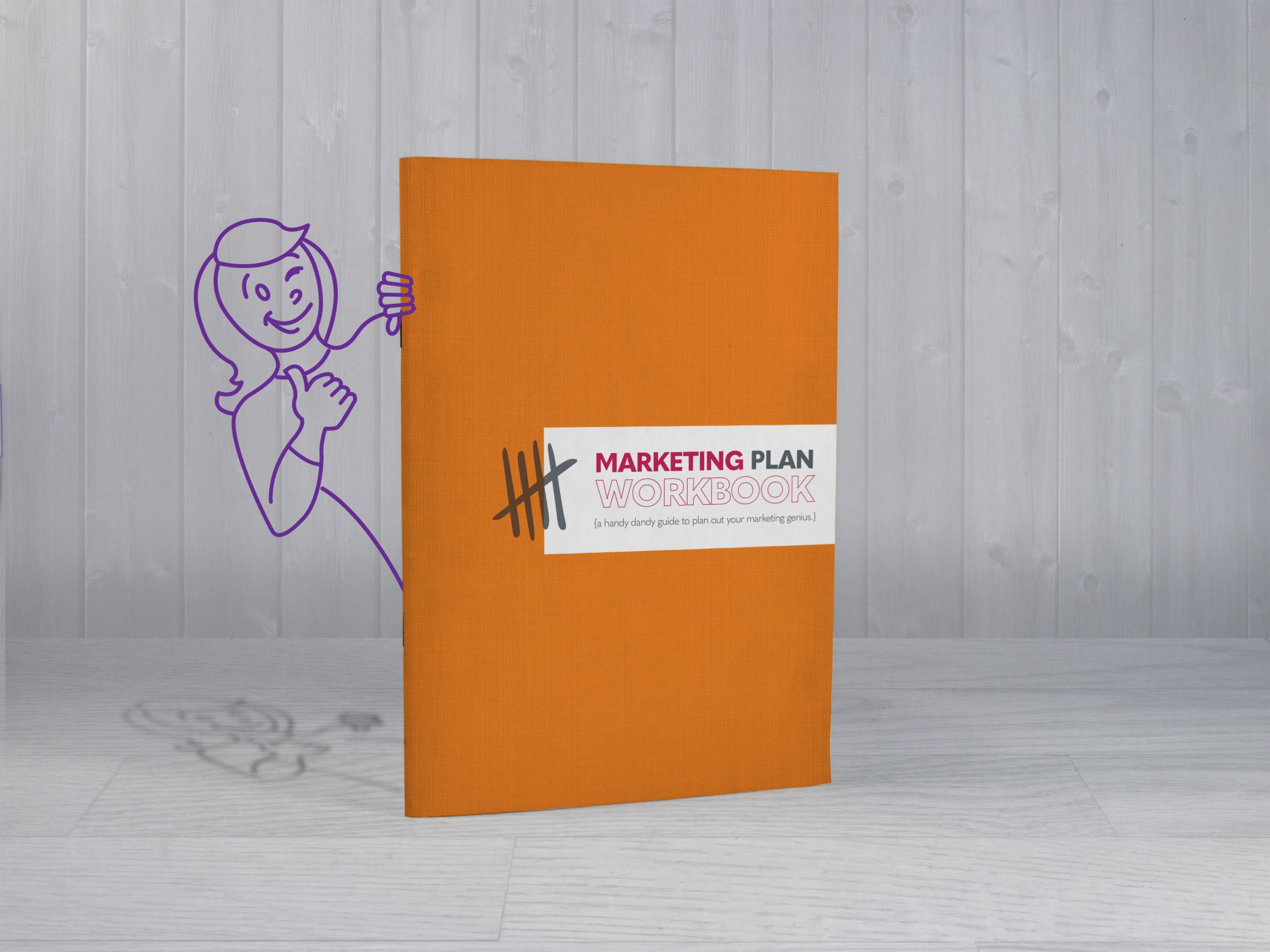
How to use an AI assistant (ChatGPT, Bard, etc.) to help you write a marketing plan
AI assistants have taken the world by storm, and no other profession has felt it more than marketing.
You may think, “I don’t have time to learn something new. I don’t have time to become an expert!” But, with just a little time and guidance, you can master the basics and generate ideas for various marketing needs, from social media and copywriting to email.
Before we go further, though, take note of that keyword in the last sentence: ideas. AI tools, like ChatGPT, Bard, and Bing Chat, to name a few, aren’t your ticket to the New York Times bestseller list. It won’t create your next winning creative pitch. It can’t decide on your A/B ad copy test before it’s been tested. It simply won’t replace human thoughts, human ideas, or human effort. It is merely a tool to make our human work better. Get you unstuck. Create momentum. If you start from that understanding, AI tools can be your new best digital friend.
When it comes to marketing, marketing plans are the foundation of any successful marketing practice. So, it’s only natural that we start there. They take significant effort, so while AI won’t write a marketing plan for you, it can get you started and help push you toward a final plan. But here’s the key to using an AI assistant: you have to start with the proper prompts to get effectual output.
I’ll share how ChatGPT or other AI assistants like Bard, Bing Chat, or Jasper can help you write a marketing plan with prompts you can copy, paste, and personalize.
The Power of AI for Marketing
Just like a real-life colleague, you need to know their strengths, what excites them, and what motivates them at work to create an effective working relationship. The same can be said of ChatGPT or Bard. (It seems odd to think of them as a “person,” but I think it does help when working through the prompts.)
I asked ChatAI (the company that created ChatGPT) to define itself, and here is what it said: “ChatAI is an artificial intelligence-powered chatbot that can engage in conversations with users. It uses natural language processing and machine learning algorithms to understand and respond to user queries. ChatAI can be integrated into various platforms such as websites, messaging apps, and social media channels to provide instant customer support, answer frequently asked questions, and even assist with sales and marketing. With ChatAI, businesses can automate their customer service and improve their overall customer experience.”
I also asked Bard the same question, and here is what it said: “Bard is a large language model (LLM) chatbot developed by Google AI. It is trained on a massive dataset of text and code, and can generate text, translate languages, write different kinds of creative content, and answer your questions in an informative way. Bard is still under development, but it has learned to perform many kinds of tasks, including:
- Following your instructions and completing your requests thoughtfully.
- Using its knowledge to answer your questions in a comprehensive and informative way, even if they are open-ended, challenging, or strange.
- Generating different creative text formats of text content, like poems, code, scripts, musical pieces, email, letters, etc.”
Why, thank you for the explanation, Bard! But it would be helpful to define AI. The best description I’ve read is, “It’s an application of mathematics and software code to teach computers how to understand, synthesize, and generate knowledge in ways similar to how people do it. AI is a computer program like any other – it runs, takes input, processes, and generates output. It is owned by people and controlled by people, like any other technology.”
The above description is why crafting your prompts like a real conversation is so important.
How to Write the Best ChatGPT Marketing Plan Prompts
Mastering the art of writing prompts is vital to getting quality results. Prompts are text-based instructions that AI can understand and respond to. Approach prompts as you would a conversation (only you’re conversing with a computer).
Every prompt should include these three essential things:
- Set the Context: Define the task and goal. What exactly do you want ChatGPT to do for you? You also need to give it background. You wouldn’t walk up to a stranger on the street and tell them you are “looking for top marketing trends for 2023 and ways to implement them into a marketing strategy and plan.” They would not know what you’re talking about or where to start! They’d want to know the basics, like what industry, for what company, and what type of marketing trends (digital, traditional, email-specific, for example) at a minimum.
This video offers some great advice for getting started; ask ChatGPT to give you 20 questions to answer so that it can get to know you better. Then, provide answers, and now the context is set.
- Be Specific: What are you looking for? Headlines? 100-word descriptions? Ideas for strategy or tactics? Analysis? It can offer good responses for all of these and more.
Start with defining the tone and format so that your answer will be customized for your purposes. Here are some other things you could include in your prompts:- Tone: for example, formal vs. casual
- Format and limitations: for example, outline, bullets, or 100 characters vs. five paragraphs (you can even tell it to create a spreadsheet with specific columns and rows!)
- Keywords: important terminology or industry keywords to include
- Examples: feed it an example it can mimic
- Audience: make sure it knows whom it’s targeting
- Quotes/Statistics: request or encourage the use of these to support its ideas
- Call to action: make sure to include this, as it will give you good ideas
- Follow-up: Ask additional questions to improve the responses. Don’t take the first response as your answer! For example, you can ask for examples of successful campaigns as backup evidence for its answer. (Remember, think of it as a conversation!)
Top Prompts for Marketing Strategy and Plan Creation
Marketing planning can seem daunting. If done right, it’s a document that methodically puts together your vision, analysis and inputs, ideas (through strategies and tactics) and a path for execution. So, getting the most out of ChatGPT (or other similar AI assistants) by using the below prompt ideas will help you get that marketing plan well on its way!
And, really, as marketers in the nonprofit and association sector, we need all the help we can get.
I used my Marketing Plan Workbook as the outline to create these prompts and worked methodically through them in these sections. Every prompt that I’m suggesting I’ve used in the making of this blog post. (I put together a client marketing plan – a bonus for them as it wasn’t in scope.)
I copy and paste the answers to my prompts into a draft document that I can edit when I’m done.
Background
Goals and Objectives
Start by developing high-level goals with this prompt:
What general goals should I include in a marketing plan for [insert nonprofit and association]?
Then dig deeper into each goal and ask for more evidence on why these goals would be appropriate. Ask the AI assistant if these goals align with your overall objectives and mission (you’ll have to supply that), and ask if they follow SMART!) I’m using the goal of “increase membership” as one of the goals identified with this prompt:
Can you provide statistics or evidence about why growing membership in the [insert industry/organization name] would be important?
Then, move on to objectives, which can be tricky. These are the ways you will achieve your goals. I’m sticking with the same thread above about membership from above:
Identify three objectives for increasing membership, starting with verbs like launch, increase, enhance, and promote.
Here is an excellent opportunity to ask if the AI assistant has any additional ideas (always better to get more and ditch some later) or ask if it left anything out!
Competitors
Knowing competitors and their social accounts can be very useful to your marketing strategy. Quickly identify your competitors, their websites, and Instagram handles by asking your AI assistant:
Who are [insert organization name]’s top competitors? Include their web address and Instagram handle.
You can drill down into the type of competitors, too. Specify whether you want AI to identify direct, similar, indirect, or broader industry competitors.
Examine the competitive landscape for [program/offering], identifying key competitors, their strengths and weaknesses, and potential opportunities for differentiation and growth.
Or try getting super specific with one competitor and their product:
Compare [insert organization name’s [program/offering] and compare/contrast it to [top competitor’s product/program/offering.]
Write a product comparison chart between our X product/service and its main competitors.
Stand out from the competition by thinking about your USP:
What makes our [program/offering] stand out from [competitors/similar offerings]?
SWOT
Get a jump start on a high-level SWOT. You can even ask for the output to be on a grid!
Create a SWOT analysis for [insert nonprofit or association name]. Create a 2×2 grid including strengths, weaknesses on top, opportunities, and threats on the bottom.
Dive deeper into each category (strengths, weaknesses, opportunities, threats) for more context, for example:
Elaborate on the weaknesses identified.
And wrap up your SWOT by connecting it to your goals and objectives:
Tie together this SWOT analysis with the marketing goals. What are our next steps?
Industry Insights/Trends
Trends change yearly, and staying on top of them can be challenging. AI makes this easier:
What are the top trends in [your industry] for [X year]?
Then ask for more information on each trend. This is an excellent time to ask for references, statistics, or research, which will allow you to better understand each trend and, ultimately, where you think your marketing plan should respond. For example:
How does [insert one trend] relate to my marketing goals?
Challenges
Identifying your organization or product/offering challenges upfront can help to create a successful marketing strategy:
Discuss potential marketing challenges or obstacles we may face in [insert industry] and propose solutions or mitigation strategies to overcome these challenges.
Based on those answers, elaborate on [insert first challenge].
Target Market
If you’ve followed the prompts so far, you can tell that the AI is getting more familiar with your industry, organization, and line of thinking. As you begin the audience section, it would help to identify your audience already. I’ve found that audience group specificities are long-established with nonprofit and association marketing and only need fine-tuning. Below are prompts that will help you flesh out those groups.
Target Audience/Segments
Start with defining (or redefining) your target segments. Try these prompts.
List the key marketing segments in [industry]. Which segment has the most significant opportunity for our [organization]?
Identify and analyze the primary target audience segments for [program/offering], considering demographics, psychographics, and buyer behavior to inform our marketing strategy.
How can we effectively target our desired [audience/customer demographic]?
Buyer Personas
If you want to create buyer personas, let AI do all the work with this prompt. You’ll need some basic information for context.
Our primary audience is [persona #1 descriptor in 5-10 words]. They are [insert at least three things you know about this persona]. Create a persona including:
– Behaviors
– Challenges
– Interests
Give the persona a quirky name (for example, Sales Samantha) that corresponds to the persona’s character traits.
List common challenges faced by [persona description].
Here are some additional questions to help you flesh out the persona:
- What do they read? Online and offline? Cite sources.
- How do they learn about new stuff? New tools? New articles?
- What do they love about their day (work or personal)?
- What motivates them (work or personal)?
- What do they share on social media?
You can also ask AI to walk you through the buyer’s journey:
Generate an AIDA for [program/offering].
Branding
At first, I thought that asking ChatGPT to help me develop a brand personality and tone of voice for my client was crazy! “These are such emotional and personal decisions. How could AI do that,” I thought to myself. But they can help with adjectives and fill your coffer with ideas to help you narrow down your brand strategy.
Use the following list of brand dimensions and fill in this prompt:
Our brand, [Insert organization name], does [insert mission statement]. Help me develop a [insert brand dimension].
- Brand Values
- Brand Positioning
- Tone of voice
- Brand Essence Examples here
- Brand Attributes Examples here
- Brand Promise Examples here
- Brand Manifesto Examples here
- Brand Pyramid Examples here
- Brand Attributes, Features, Benefits
Marketing Channels
Strategies
Coming up with new strategies and ideas can be challenging. Start with a strategy before tactics:
Create a detailed content marketing strategy for [organization/program/service], including content topics, formats, and distribution channels that align with our target audience and marketing objectives.
Generate a go-to-market strategy for [program/offering] targeting [audience group].
Discuss ideas on using [marketing channel, like content marketing] to enhance my marketing strategy.
And a prompt that asks for a plan for a few channels:
Develop a comprehensive multi-channel marketing plan for [program/offering], outlining each channel’s specific tactics and strategies, including but not limited to [insert channels.]
Be sure to ask AI to connect these back to your goals. (It remembers!) This will help make editing your first draft easier because you’ll have much input to work with.
Tactics
If you are looking for inspiration on how exactly to reach your target audience, let AI help. This is where I appreciate all the ideas I can get! Just make sure to describe your target audience:
What marketing tactics should I leverage to reach my target audience?
Discuss effective marketing segmentation methods to tailor marketing strategy and reach the [target audience.]
I’d also encourage you to ask about specific tactics.
How can we utilize [insert tactic] to reach [a goal]?
Or try a more general approach:
What marketing tactics should I leverage in the [industry]?
Initiatives
Campaigns
I’ll admit, this is where I think any AI assistant will provide a very generic answer, but it’s worth asking to get you started:
Come up with an influencer marketing strategy on Instagram for [program/offering].
Create an advertising campaign about [organization/program/offering] targeting [target audience]. Include key messages and slogans and choose the best media channels for promotions.
Create a 3-month social media campaign calendar for our product to [insert goal] and mention the channels we should focus on.
Create a [number]-month content calendar for a [type/industry] organization. Include [list formats]. Include [number] pieces of content per week.
*Formats can be your typical marketing activities like social media posts, webinars, LinkedIn Lives, blog posts, etc.
Measurement
We all like to track growth and ROI, but sometimes we need to be more awareness-focused or performance-focused. Leverage your AI assistant to help you think through the options and ensure you cover all bases.
Discuss creative ways to measure ROI on the marketing strategies already discussed and improve tactics based on results.
Outline a plan for tracking and measuring the success of our marketing initiatives for [organization/product/service], including the key performance indicators and analytics tools we should utilize to assess campaign performance.
How can one measure the efficacy of their content marketing efforts and make data-driven decisions?
What marketing channels have the lowest ROI?
What are results benchmarks for [insert channel]?
What are the most important metrics to measure the success of [insert nonprofit or association name] marketing?
Planning
Budget
As nonprofit and association marketers, we must produce results on a tight budget. Outlining a budget for each marketing campaign will go a long way in overall planning. You are the expert on where every penny could be used, but you can still ask AI to organize everything previously discussed and provide input on budget ballpark ranges.
Create a budget allocation plan for our marketing campaign, considering factors such as channel effectiveness, return on investment, and overall marketing goals for [organization/product/service]. Our comprehensive marketing goals are [insert goals].
With a total budget of [insert amount] for paid marketing/advertising, how would you recommend splitting it up across these channels [list everything you have planned]?
You can also ask questions like you would in a typical search engine search:
- How much would an organization with a [insert total marketing budget] spend on [channel] for [number of months]?
- Provide some [insert industry] marketing budgeting tips.
- What benchmarks exist for a [insert amount] spend on [insert channel]?
- Offer advice on how to split my [insert amount] between marketing and communications?
Timeline
To get individualized timelines per campaign, ask:
Our [include the length of time] timeline will consist of [insert number of] campaigns. Break it down into five phases and give us the name of each phase.
Following the above, ask your AI assistant to break each phase into three to ten activities.
And then ask to estimate the start and end dates of each phase.
Develop a timeline for [campaign name], including key tasks and deadlines over the course of [include the length of time.] Create this timeline in tabular form for a marketing plan.
With the above, you can copy and paste into Excel to create a GANTT chart!
Putting Together Your Final AI-assisted Marketing Plan
At this point, you will have a lengthy Word document with a free-flow copy/paste of all your assistant’s responses. You’ll have a decent first draft if you paste them in order. But we all know the first draft is just a rough sketch of the final plan. Emphasis on the rough.
The editing begins, as some of the generated ideas/answers will not fit your brand or marketing vision. You’ll need to add in your knowledge and expertise. For example, maybe one trend AI identified makes sense to you, but you also know a trend that’s been creeping into your industry that AI didn’t recognize.
Additionally, the draft must be infused with your brand voice, wit/humor/personality, and human emotion. While AI can converse with you in a specified tone, nothing it says can replace human expressions, such as symbolism, reasoning, or creativity. That’s your job.
Here are the steps I recommend in your editing approach:
- Add in your section headers and sub-heads to give your document overall structure (if you haven’t done this already)
- Add additional sections/paragraphs, typically at the front or the end, that set the tone for your marketing plan. For example, these could be an executive summary, a high-level overview of your mission/vision and direction for marketing, or other timelines or budget details.
- Review the entire document and slash pieces that don’t make sense for your brand. I expect you’ll keep about 40-70% of what your assistant helped you create. And add in content that comes to mind at the same time.
- Now, go section by section and edit it to fit your voice. Restructure sentences. Add in more helpful set up of ideas and actions. This part will take some time, but it will go much faster because you work with a solid base.
- Re-read the entire document and ensure that it flows. Ensure that your goals connect to your strategies, tactics, and measurement. Ensure that if you wrung out the document, your brand would slowly ooze out. This means it’s YOURS. AI-assisted, of course, but all you.
Now implement!



